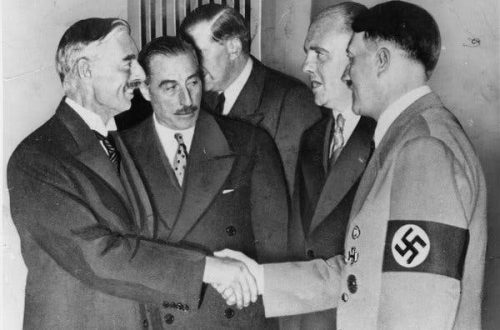In an article for the New Statesman, John Pilger makes the following flabbergasting claims:
How do wars begin? With a “master illusion”, according to Ralph McGehee, one of the CIA’s pioneers in “black propaganda”, known today as “news management”. In 1983, he described to me how the CIA had faked an “incident” that became the “conclusive proof of North Vietnam’s aggression”. This followed a claim, also fake, that North Vietnamese torpedo boats had attacked an American warship in the Gulf of Tonkin in August 1964.
“The CIA,” he said, “loaded up a junk, a North Vietnamese junk, with communist weapons – the agency maintains communist arsenals in the United States and around the world. They floated this junk off the coast of central Vietnam. They shot it up and made it look like a firefight, and they brought in the American press. Based on this evidence, two marine landing teams went into Danang and a week after that the American air force began regular bombing of North Vietnam.” An invasion that took three million lives was under way.[1]
Pilger
The claim that “North Vietnamese torpedo boats had attacked an American warship in the Gulf of Tonkin in August 1964” was “fake.”
The Truth
On August 2 1964, North Vietnamese torpedo boats did attack an American warship in the Gulf of Tonkin. [2] There was a reported second attack on an American warship in the Gulf of Tonkin on August 4, 1964. While recent research on this reported second incident suggests that there was not an actual attack, [3] scholarly opinion suggests that this was not a deliberate fabrication. [4]
Pilger
That there was a second fake incident and this led to the marine landings in Danang.
The Truth
Irrespective of whether Ralph McGehee, Pilger’s source, is accurate that this was a fake incident, the finding of this vessel was not the reason for the marine landings in Danang. The marine landings in Danang occurred as a result of a request by the Commander, U.S. Military Assistance Command, Vietnam (COMUSMACV), General Westmoreland on February 22, 1965 to assist in protecting the airbase and other installations in the area.[5]
Pilger
Pilger gives credence to the idea put forward by McGehee that his incident of the firefight off the coast of the Vietnam was the “conclusive proof of North Vietnam’s aggression.”
The Truth
The firefight to which McGehee refers to occurred on February 16, 1965. This was just one example of many examples of North Vietnam’s aggression put forward in the State Department’s white paper on the subject that was issued on February 27, 1965. The white paper’s conclusion commenced:
The evidence presented in this report could be multiplied many times with similar examples of the drive of the Hanoi regime to extend its rule over South Vietnam.
The record is conclusive. It establishes beyond question that North Vietnam is carrying out a carefully conceived plan of aggression against the South.[6]
Pilger
The Vietnam War took “three million lives.”
The Truth
The total amount of deaths cannot be determined for certain, but three million would a substantial exaggeration. In 1978, Guenter Lewy put the total deaths at 1,313,000.[7] A report in the New York Times in 1994 stated that “most authorities” concur that the losses were around 1.3 million.[8] A detailed study carried out in 1995 suggested that the range of Vietnamese deaths were likely to range between 791,000 and 1,141,000 with a midpoint of 966,000. [9] The non-Vietnamese deaths are easier to determine at 61,373. This includes the 56,146 American deaths and the balance of casualties comprising Allies from Korea, Australia, New Zealand and Thailand.[10]
Endnotes
[1]John Pilger, “The way to lie about another war,” New Statesman, June 3, 2010, online.
[2]Edwin E. Moise, Tonkin Gulf and the Escalation of the Vietnam War, (The University of North Carolina Press, 1996) p.79.
[3] Robert J. Hanyok, “Skunks, Bogies, Silent Hounds, and the Flying Fish: The Gulf of Tonkin Mystery, 2-4 August 1964,” Cryptologic Quarterly, Vol. 19, No. 4 / Vol. 20, No. 1, (Winter 2000/Spring 2001,) pp. 1-55. I have used the online version of this article that has slight omissions.
[4] Edwin E. Moise, Tonkin Gulf and the Escalation of the Vietnam War, p.xv.
[5] The Pentagon Papers, Vol. 3 Ch. 4.
[6] Aggression from the North – the Record of North Vietnam’s Campaign to Conquer South Vietnam, U.S. State Department, February 27, 1965, published in full in the New York Times, February 28, 1965.
[7]Guenter Lewy, America in Vietnam, (Oxford University Press, 1978), p.453.
[8] New York Times, May 20, 1994.
[9] Charles Hirschman, Samuel Preston, Vu Manh Loi, “Vietnamese Casualties During the American War: A New Estimate,” Population and Development Review, Vol. 21, No. 4 (December 1995) p.807.
[10] Guenter Lewy, America in Vietnam, p.451.


